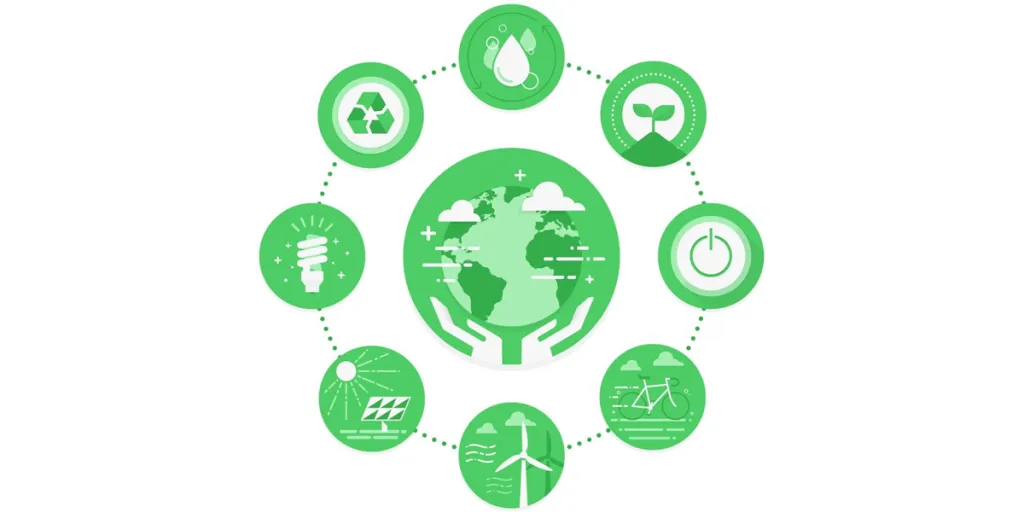People are more aware of how their choices affect the environment today. Businesses need to adjust to this shift and focus on sustainability in their marketing. But why should companies care about sustainable marketing? And how can businesses do it?
Before that, businesses must avoid pretending to be environmentally friendly (greenwashing). Instead, it should be a genuine effort to reduce their carbon footprint and support a sustainable future. This article will highlight some sustainable marketing strategies business buyers can use to lessen their environmental impact and appeal to people who care about social issues.
Table of Contents
What exactly is sustainable marketing?
Sustainable marketing vs. green marketing: what are the differences?
The benefits of starting a sustainable, eco-friendly business
4 marketing strategies to help start a sustainable business
Understanding the sustainability playbooks
Bottom line
What exactly is sustainable marketing?

Before talking about specific sustainable marketing plans, it’s important to understand what sustainable marketing means. Basically, sustainable marketing is about promoting products or services in a way that doesn’t harm the environment or society. It could mean using less energy, and producing less waste, or supporting fair worker treatment and wildlife protection.
One big part of sustainable marketing is being clear and honest. People nowadays want to know exactly what they are buying and how it affects the world. So, retailers must be open about what they are doing to be more sustainable. They can give details about what they use in a product, how they made it, and what happens after throwing it away.
Another important aspect of sustainable marketing is being socially responsible. That means doing things to help the communities where businesses operate. They buy materials locally or give some of the revenue to good causes. Business buyers can improve their reputation and attract people who love the cause by showing they care about society.
Sustainable marketing vs. green marketing: what are the differences?

Green marketing and sustainable marketing both promote eco-friendly practices and products, but they have different focuses and goals. Green marketing is when companies talk about the environmental benefits of their products. Companies may use labels that indicate eco-friendliness or highlight the use of renewable materials or energy in their products.
The idea is to attract customers who care about the environment and show that their product is better than others because it’s eco-friendly. Green marketing, on the other hand, doesn’t always look at everything and may not talk about other important things like ethical working environments or how the product helps communities. Sustainable marketing is a bigger idea.
Sustainable marketing looks at the environmental, social, and economic impacts of products from the time manufacturers make them until consumers dispose of them. The goal is to make and promote products and services that meet today’s needs without harming future generations. Sustainability marketing is more about balancing people, the planet, and profit.
The benefits of starting a sustainable, eco-friendly business
Improved brand reputation
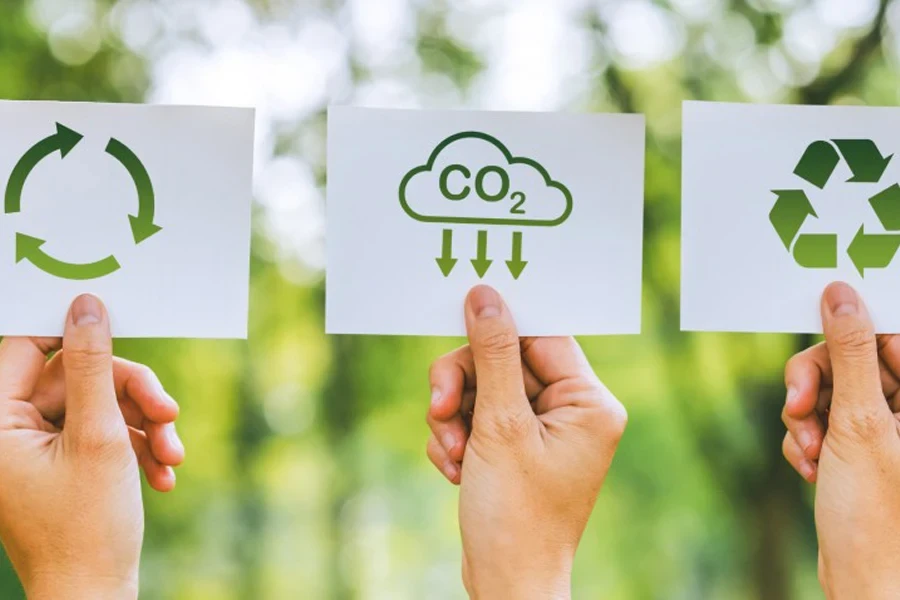
Today, people care more about how their choices affect the environment and society. When businesses show they care about being sustainable, it makes them look good and attracts people who care about making a positive difference. In fact, according to McKinsey, more than 60% of customers are willing to pay extra for products with eco-friendly packaging. NielsenIQ says it might even be as high as 72%.
Increased customer loyalty

When people feel good about supporting an eco-friendly business, they are more likely to become repeat buyers. According to Capgemini, 64% of customers are happier when buying sustainable goods. And Forbes says a whopping 88% of people stick with brands that care about the environment and social issues.
4 marketing strategies to help start a sustainable business
1. Make sustainability a core value

One of the most important ways to do sustainable marketing is to make it a central part of the business. It means thinking about sustainability in everything the company does, including product design, production, and sales. Patagonia is a great example of a sustainability-focused business.
They care about the environment, are responsible, and show it in their actions. For example, Patagonia uses eco-friendly materials, makes less waste, and gives some of the generated money to help the environment. Additionally, they have a program called Worn Wear, which encourages people to fix and reuse their clothes instead of throwing them away and buying new ones, which is better for the planet.
When companies make sustainability a big part of what they do, it makes their marketing more honest and real. It shows that they care about the environment and aren’t saying it to sell more stuff. It’s a great strategy that will easily attract sustainability-focused consumers.
2. Shift towards sustainable packaging
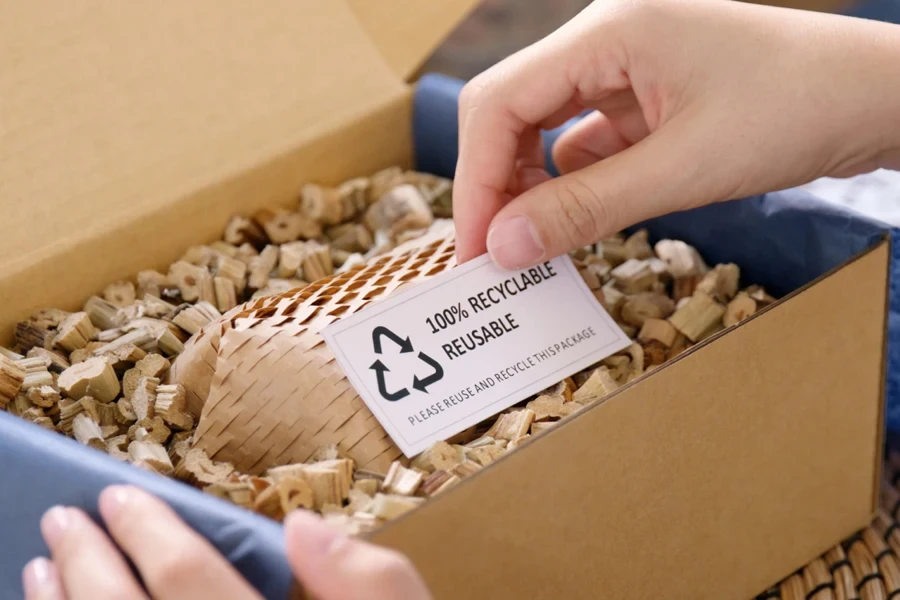
Packaging is a key part of marketing a product, and eco-friendly options are becoming more important to buyers. Sustainable packaging means using recycled materials, smaller packages, and fewer harmful chemicals. Take Lush Cosmetics, for example; they offer products without packaging when possible and use recycled plastics for their containers. Consumers can even return these containers to any Lush store.
Using sustainable packaging is another great strategy for startups and existing businesses. With it, companies can attract eco-conscious customers, reduce their carbon footprint, and save money.
3. Use some green advertising without greenwashing
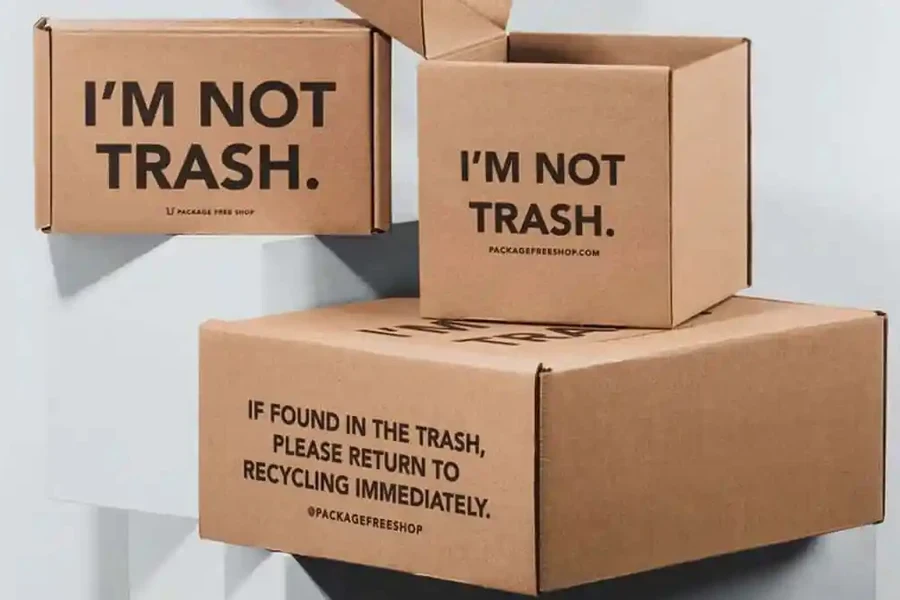
As mentioned earlier, green advertising focuses on highlighting the environmental benefits of a product or service. While it can include using eco-labels, promoting renewable materials, and showcasing the product’s positive environmental impact, businesses must never greenwash.
Greenwashing involves making false or exaggerated claims about how eco-friendly a product is. Greenwashing can damage a company’s reputation quickly and mislead customers. To avoid greenwashing, ensure all environmental claims have credible certifications and evidence backing them.
Also, take a broader approach to sustainable marketing. How? By considering the social and economic impacts of products, not just the environmental ones.
4. Market to the right sustainability segments
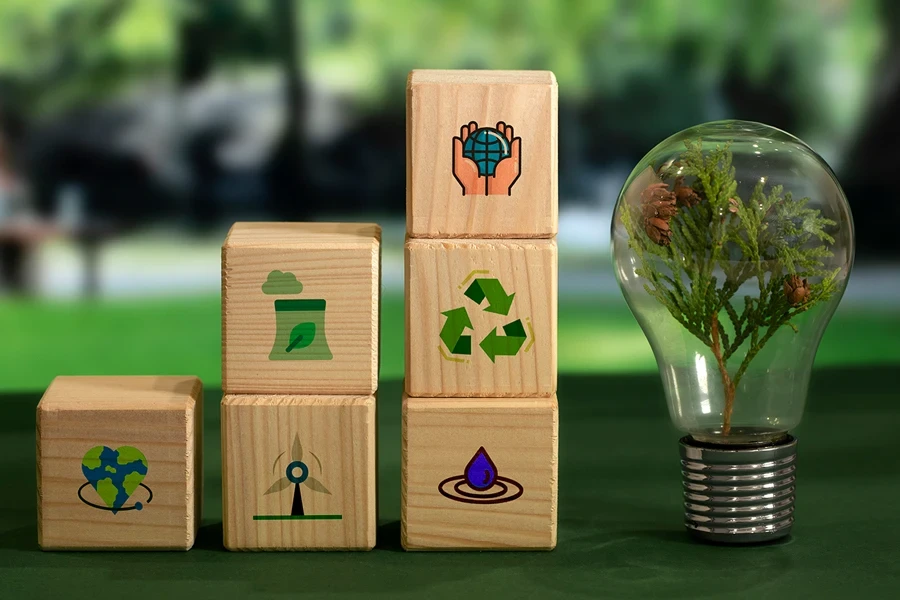
Social and environmental features can change how different customers see a product. Many companies use a one-size-fits-all approach to sustainability marketing, which can turn off some customers. Instead, brands should segment their customers based on their attitudes toward sustainability and tailor their messages. Business buyers can categorize consumers into three groups:
- Greens (“True Believers”): These consumers highly value sustainability, seek it out, and may sacrifice performance just for it.
- Blues (“Agnostics”): These consumers prefer sustainability if it doesn’t mean sacrificing much on price or performance.
- Grays (“Disbelievers”): These consumers don’t care about sustainability and may be skeptical of switching to such products.
Interestingly, customers can switch between these profiles depending on the product. Someone might choose green energy exclusively, prefer recycled packaging only if it’s cost-neutral, and avoid sustainable cleaning products assuming they don’t underperform. Buying decisions are complex and depend on psychology.
For example, moral licensing means someone who buys an expensive eco-friendly car might not spend extra on green products later, feeling they’ve done their part. Social signaling can also drive visible eco-friendly choices, like solar panels, over less noticeable ones, like eco-friendly paper. Marketers must understand these behaviors to promote sustainable products effectively.
Understanding the sustainability playbooks
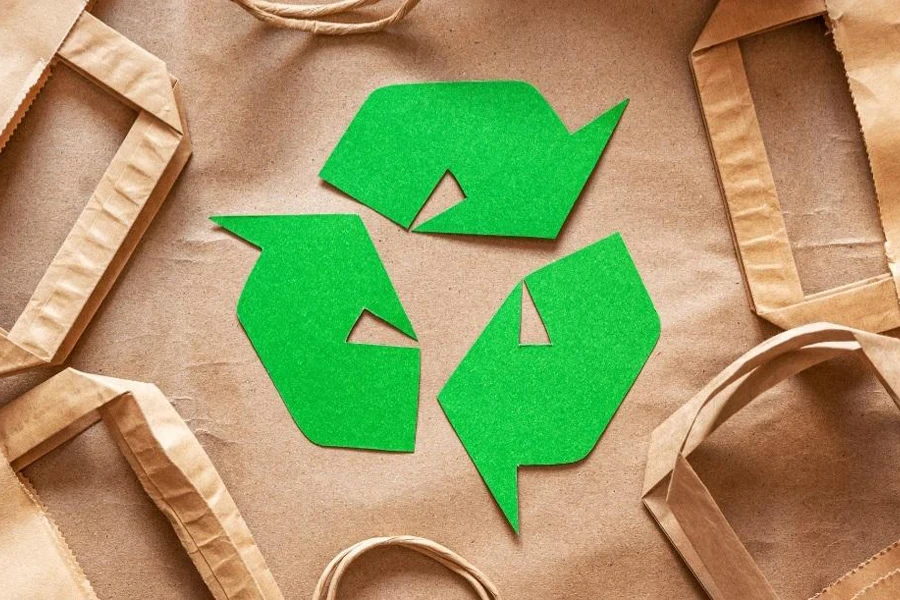
Most sustainable products fall into three categories: independent (no impact on traditional benefits), dissonance (diminishing traditional benefits), and resonance (enhancing traditional benefits). However, experts call these categories “playbooks,” and businesses must understand them properly to launch a sustainable brand. Here’s a closer look at each playbook in action and how they interact with different customer groups.
Independent playbook

Imagine this: A B2B business now uses renewable materials in their PVC pipes, fittings, and valves, cutting CO2 emissions by up to 90% without affecting quality. How should this business communicate this to customers? It depends on the target customer group.
For gray customers, don’t emphasize sustainability, as they may suspect a hidden cost. However, for green and blue customers, businesses can highlight that the eco-friendly PVC resin maintains high performance. They may also offer science-based audits to prove the product’s environmental impact.
Independence strategies can offer short-term advantages, but sustainable benefits often need to be cost-effective. Blue consumers, in particular, seek affordable options. If sustainable businesses are unable to avoid charging a premium, don’t exaggerate it, and regularly review customer needs and market competition.
The dissonance playbook
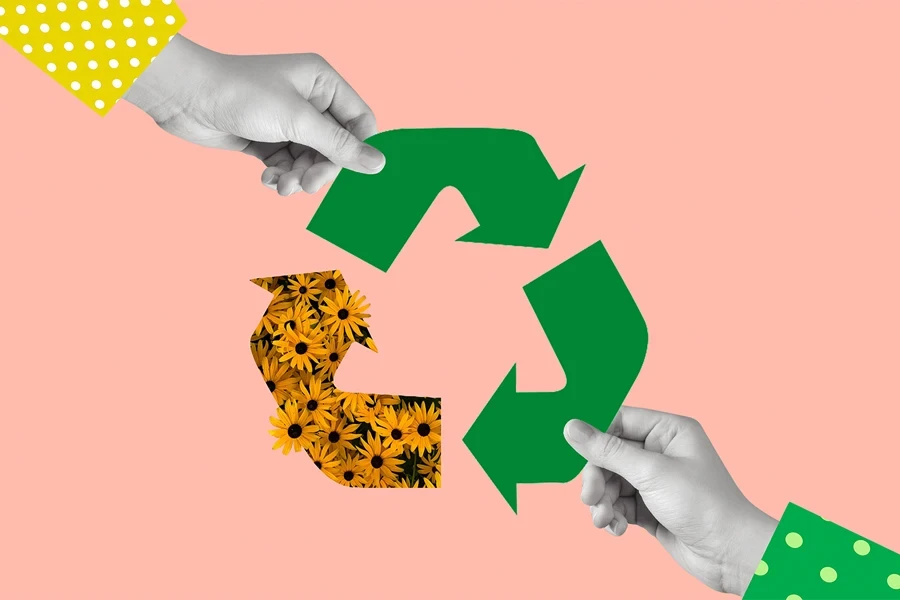
Products that trade performance for sustainability can still succeed. Companies can sell these to green consumers and sometimes to blue ones, too. One strategy is to convince some blue customers to accept lower performance in exchange for personal benefits tied to sustainability.
For example, Oatly’s plant-based milk initially struggled due to taste perceptions. But rebranding it as a trendy lifestyle choice helped it succeed, reaching US $722 million in global sales in 2022. Additionally, Toyota’s hybrid Prius also succeeded by appealing to green consumers despite being expensive and underpowered.
Toyota used nonmarket strategies, like lobbying for hybrid benefits in California, to attract blue customers. Over time, they improved the Prius and sold 2.6 million hybrids globally in 2022.
The resonance playbook

Products with strong sustainability features that enhance performance can appeal to a broad customer base. The message is simple: “You get better performance and sustainability.” Both green and blue customers like this combination. However, gray customers might not like the sustainability focus unless businesses highlight the traditional benefits and justify any premium prices. For example, GEA, a B2B manufacturing business, designs sustainable and cost-efficient equipment.
Their AddCool solution for milk-powder production reduces carbon emissions by 50–80% and operating costs by 20–30% without sacrificing quality. While European customers, mostly greens and some blues, often pay premium prices, some U.S. and Asian clients (grays) are less enthusiastic about sustainability. To appeal to them, GEA emphasizes the economic benefits, like lower energy and water use, instead of focusing solely on sustainability.
Bottom line
Not all strategies offer the same potential for long-term success. Resonant products have the greatest promise because they can appeal to all customer types, making sustainability a powerful tool for new and existing companies. Dissonant products might work in specific areas or industries but will likely remain niche until more consumers prioritize green choices.
Independent products can attract green and blue customers, but they may compete with other sustainable options across various categories. Although marketing is a core part of building sustainable businesses, innovation will always be the one thing retailers have to offer for more sales—innovation has no substitute in the eco-friendly world.
